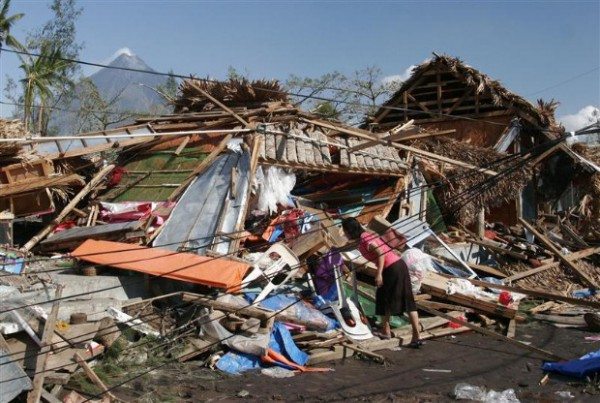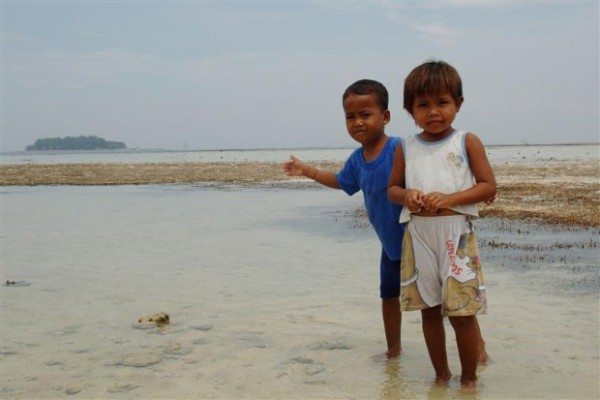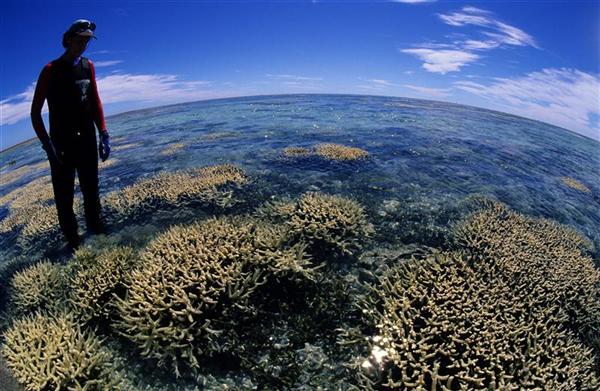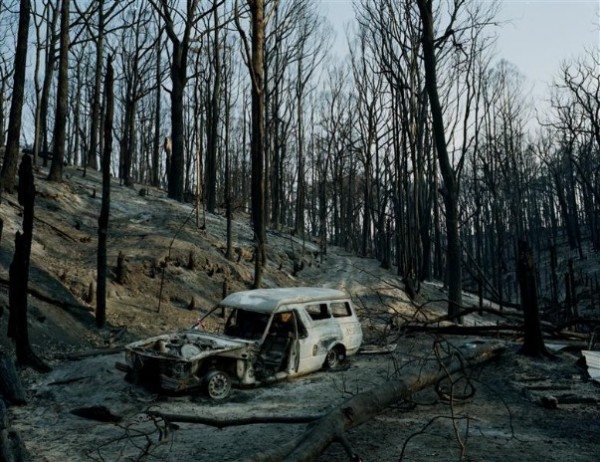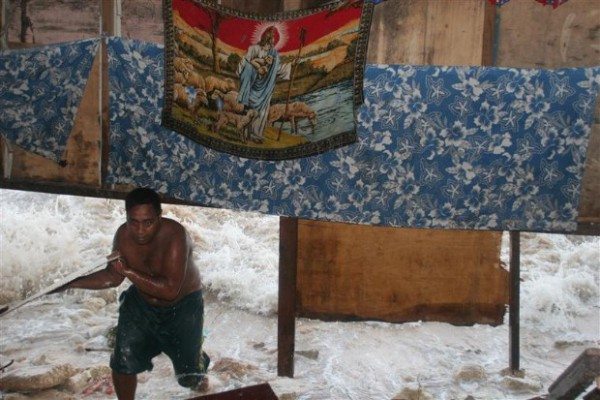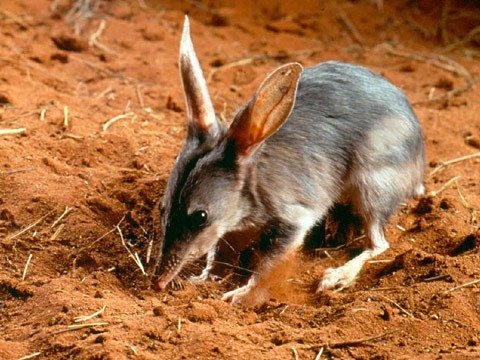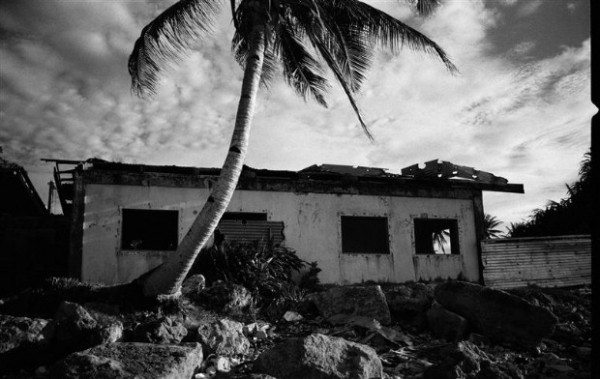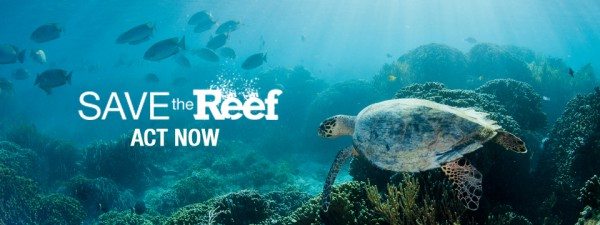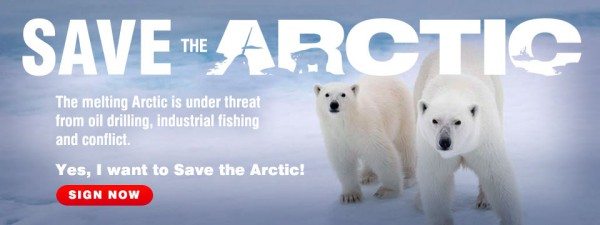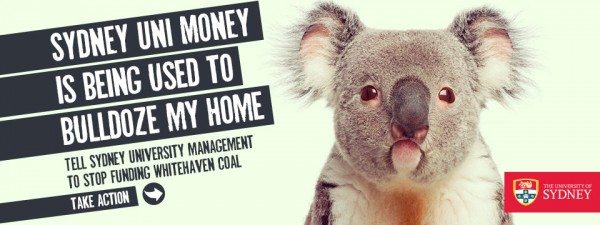Climate change is not a faraway nightmare. It’s real, it’s here, and it’s changing the way humans live. We’re seeing the effects all around us – polar ice melting, sea level rising and extreme weather events.
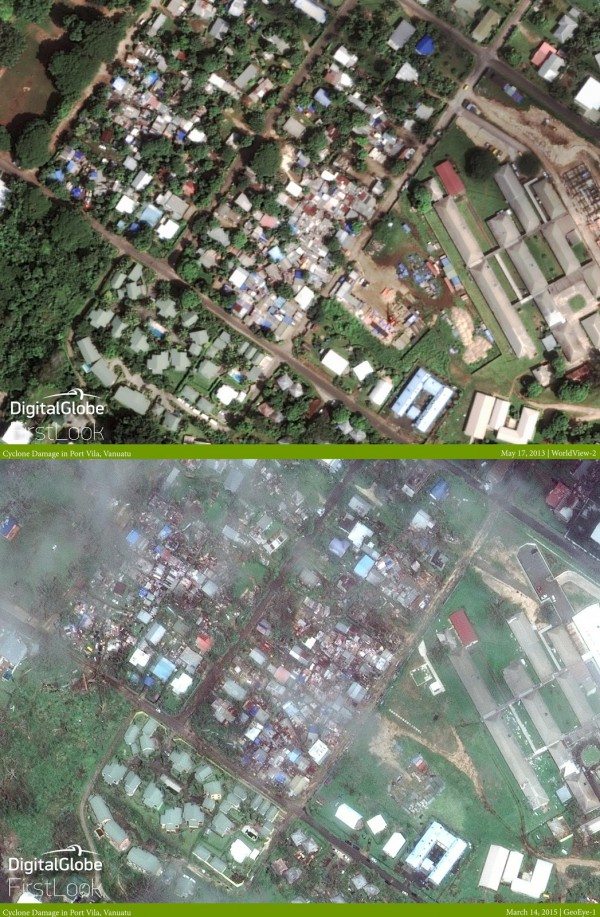
On March 13 and 14, Cyclone Pam tore through the island nations of Vanuatu, Kiribati, Tuvalu and the Solomon Islands. This aerial photos reveal the devastating impacts of Vanuatu’s worst natural disaster in memory. Photography © DigitalGlobe
A woman inspects the remains of her house in Albay, Philippines, devastated by typhoon Reming. More than 1,000 people died in the 2006 disaster. Photo © Greenpeace / Ivan Sarenas
In 2007, the Indonesian Environment Minister announced that about 2,000 of his nation’s islands are expected to drown with sea level rise. Most Indonesians, like these children of Panggang island, Kepulaun Seribu, are unaware of dire climate change predictions. Photo © Greenpeace / Shailendra Yashwant
Dr Peter Harrison from Southern Cross University documents bleached coral in the Great Barrier Reef. The Great Barrier Reef supports a $5 billion tourism industry and 60,000 jobs. But increases in ocean temperature and acidification are likely to devastate much of the reef by mid-century. Photo © Greenpeace / Michael Amendolia
The Black Saturday bushfires in Victoria were Australia’s worst ever natural disaster. 173 people died in the unstoppable inferno of early 2009. Scientists say extreme fire conditions will increase with climate change. Photo © Greenpeace / Dean Sewell
With rising sea levels, the ocean is reclaiming the Pacific island of Kiribati. During a king tide, waves forced their way inside Tiaon Bwere’s house in the village of Betio. Photo © Greenpeace / Jeremy Sutton-Hibbert
Native Australian animals are extremely vulnerable to climate change. Species at risk from higher temperatures and lower rainfall include the albatross, the mountain pygmy possum, the bilby, tree kangaroo and quoll. Image via WikiMedia user Kevin503
Abandoned houses line the coast of Rita, Majuro, in the Marshall Islands. Families were forced to leave because of rising tides, environmental refugees from climate change. © Greenpeace / Tim Georgeson
What you can do to fight climate change
Climate change is here. Our actions will determine how bad it gets.
Faced with the choice of deadly, dirty, dangerous energy like coal, oil and nuclear power, or safe, clean and renewable power, what would you decide?
Renewable energy, smartly used, can and will meet our demands. No oil spills, no climate change, no radiation danger, no nuclear waste – simply energy we can trust. We can achieve a world with 100% renewable energy.
Sign up to join the movement and stay updated about Greenpeace campaigns and opportunities to act online and in your community! Or sign one of our petitions and take action for the climate:

